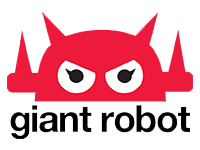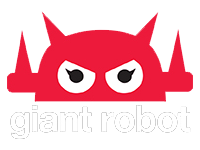GR Game Review: Asura’s Wrath X Box 360
Review by Patrick Garcia
 Full disclosure before I begin: I was not actually able to complete this game. Every time I sat in front of my TV, controller in hand and ready to play, it wouldn’t take long before it got the best of me, and I had to turn it off. I don’t mean to suggest that this game is so inconceivably difficult that it makes TMNT 1 (NES) look like TMNT 2 (NES), but it’s just that there is so little to like about the game that the experience was just excruciating. Developer CyberConnect2 may have just created the first of a new genre in which I’d like to lovingly refer to as a ‘Snooze Button Masher’ (that’s right, you’re hearing it from me first!), because every nine minutes, you might actually get to hit a button. I’m referring to the overabundance of cutscenes, of which there are some that contain simple quick-time events. Now before any of you fans of the game out there start losing it (it’s hard to believe that they exist, but I’m sure even E.T. has its share of die-hards), of course I’m not being literal and there is a certain degree of exaggeration here, but only some. Let me explain…
Full disclosure before I begin: I was not actually able to complete this game. Every time I sat in front of my TV, controller in hand and ready to play, it wouldn’t take long before it got the best of me, and I had to turn it off. I don’t mean to suggest that this game is so inconceivably difficult that it makes TMNT 1 (NES) look like TMNT 2 (NES), but it’s just that there is so little to like about the game that the experience was just excruciating. Developer CyberConnect2 may have just created the first of a new genre in which I’d like to lovingly refer to as a ‘Snooze Button Masher’ (that’s right, you’re hearing it from me first!), because every nine minutes, you might actually get to hit a button. I’m referring to the overabundance of cutscenes, of which there are some that contain simple quick-time events. Now before any of you fans of the game out there start losing it (it’s hard to believe that they exist, but I’m sure even E.T. has its share of die-hards), of course I’m not being literal and there is a certain degree of exaggeration here, but only some. Let me explain…
As a big fan of Ninja Gaiden, God of War, Castle Crashers, TMNT and other such brawlers, I actually had some hope for this game, because who doesn’t think unceremoniously maiming lesser mortals as a Demigod sounds fun? So you can imagine my disappointment when the first 15 minutes of the game (though it felt much longer) was essentially a poorly-executed rail shooter, frequently interrupted by cutscene after cutscene introducing the different demigods. As Asura descends to Earth, the objective was to blast away the Gohma, which were these red asteroid-looking things.OK, not so bad yet, I guess I just have to arrive on Earth first before I start obliterating everything. No problem. But after destroying a few Gohma, there would be a cutscene (well that was a short sequence, but I suppose we can move forth with some narrative). The scene ends and it was back to the rail shooter bit, then another cutscene, then shooter bit. These cutscenes lasted longer than the shooter sequences did, and that’s the way it progressed until all of the demigods had been introduced and the player properly detached and thoroughly disinterested.
I could already see that the story was going to be your typical Japanese romp, with the infinite weirdness that comes with it. Usually I’m someone who can look past a bland story as long as the gameplay is good, but it quickly become evident that this wasn’t going to be the case here after finally getting on the ground for some brawling combat. Essentially the only attack you have to work with is mapped to the B button, which comprises your basic melee attacks. The player can use Y for a powerful attack, but it has a refresh timer after each use, so you’re still mostly hammering away on B. Pressing and holding X is your range weapon (shooting balls of energy out of your hands), which will put the player in shooting mode and disables them from moving around. This is not very useful if you find yourself being mugged by numerous foes at once as you would expect to happen in a brawler, so this told me that either I was in for a very boring action game that never gets too intense (a blah-ction game, if you will), or it’s just a badly-designed move that seldom serves a purpose…it was a little of column A and B. You have your jump and evade, as well as a button (can’t recall which one it was now) that you could push immediately after getting hit to bounce back quicker, which I actually thought was kind of cool. Finally, there are two gauges that, when full, can either be used to unleash an ultimate attack or allow a period of time where Y doesn’t have to refresh. But as I fought through the ground battle areas of the game, I found myself really only needing to hit B, and occasionally Y after each time it refreshed (and yes, I was on the hardest difficulty). When you boil it down, B is your only real offensive attack, while everything else was just passive or needed to be built-up. I like brawlers (like the ones I already mentioned above) that have multiple attack buttons to give you more options and possibilities for combos, it’s more active and fun this way.
The whole game is episodic with multiple story arcs, which I wouldn’t normally mind, but the way it was done in this game didn’t seem to work so well. Every beginning chapter (which are all consecutive) shows intro credits as if they are each the start of the game. The stories are not interesting and this whole structure is confusing at first, since it seems to keep starting over each chapter. And if you are already quickly becoming bored of the game during its action sequences, it certainly only makes it worse as these non-playable parts just drag on.
So what, you may be asking yourself, did I not absolutely loathe about this game?
• As it has come to be expected from Capcom games, there are plenty of unlockable things to acquire (mostly concept art and such), which is always enjoyable in my book.
• When facing a boss, you sometimes have an option to cut them off in the middle of their “you can’t defeat me because I’m so powerful” speech; this was pretty badass.
Overall, Asura’s Wrath is an “Action” game that relies on being filled to the brim with flashy sequences to attempt to distract the player from being aware of the very limited gameplay and interaction they have. The best way to put it is that it feels more like an interactive manga, which, if you’re in to that sort of thing, might still be entertaining for you, but it definitely won’t entertain the majority of action game enthusiasts.




